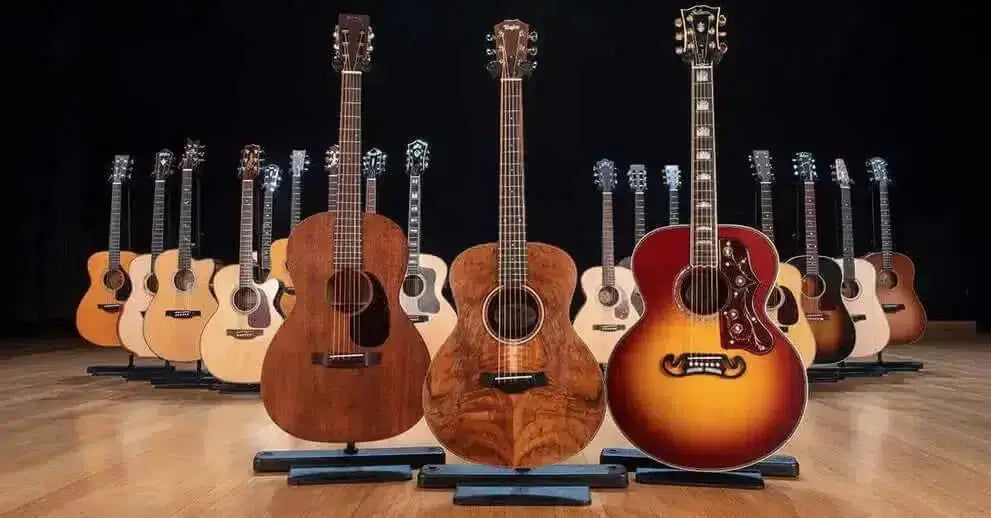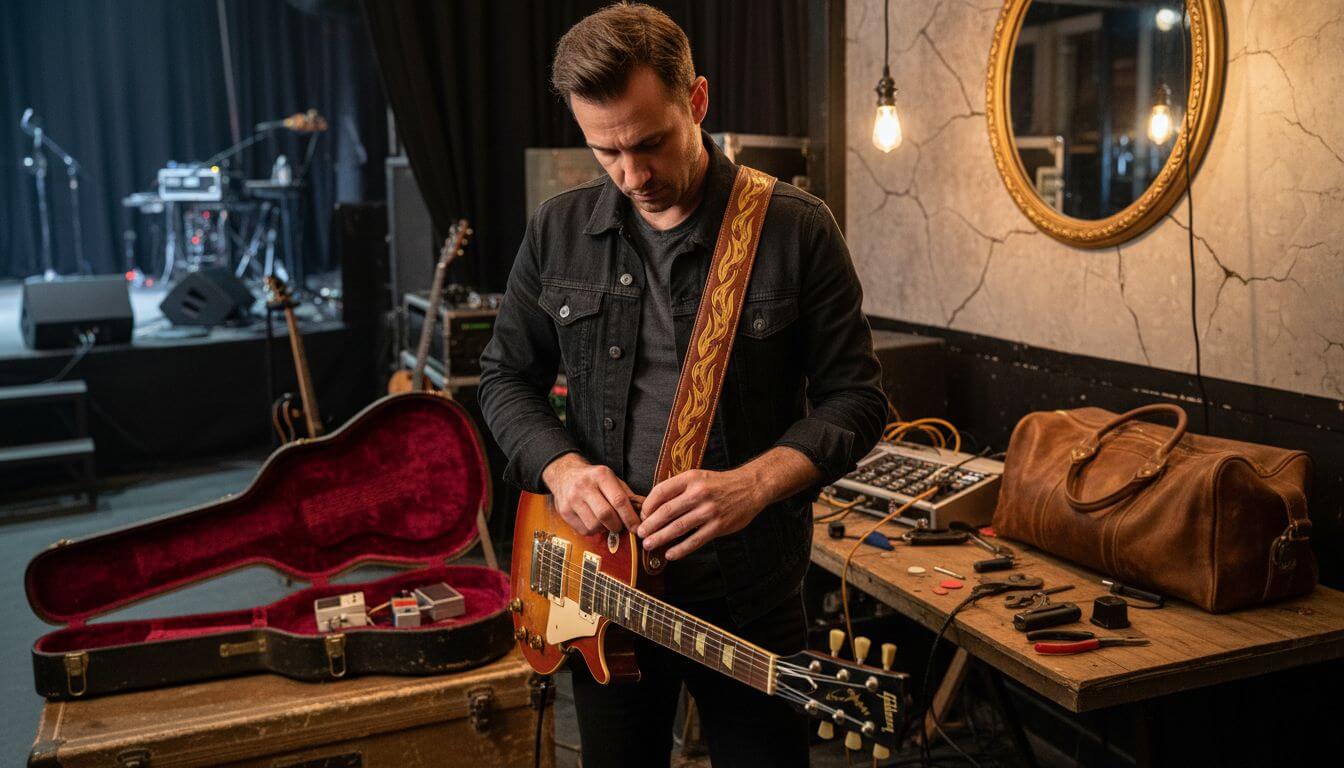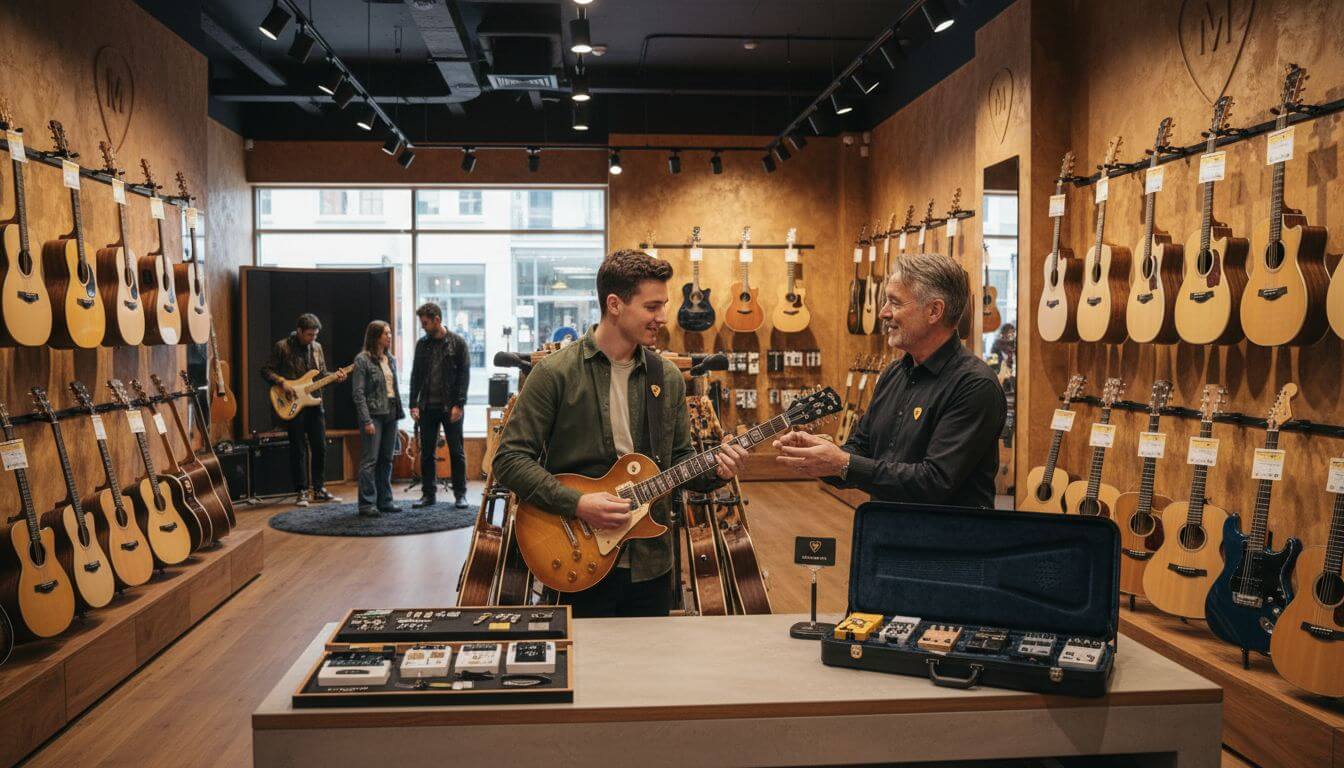Guitar bodies come in a variety of shapes, sizes and styles. To determine which guitar size is best for you, consider the space where you plan to play the instrument, your style of playing and the accessories you plan to use. If you’re just getting started with a guitar, you might feel uncertain about how to choose the best Guitar size.
To make things easier for you, we have put together this guide to help you choose the right size guitar, regardless of your skills. Whether you’re a beginner or a pro, we hope this guide will help you find the right guitar size.
What Is the Best Size for Adults
Folk, flat-top and dreadnought guitars come in concert, tenor, 6-string and 12-string variants. The regular size guitar is medium in size and appropriate for the majority of adults. If you are a beginner, you may feel more comfortable with a regular-sized guitar rather than a larger, more unwieldy instrument.
What Is the Best Size for Children
If you are buying a guitar for a child, we recommend buying a smaller size. Guitar sizing is based on the measurements from the top of the 12th fret to the bottom of the body. Smaller instruments offer less tension on the strings, making them easier to play.
A 3/4-sized guitar is usually the perfect instrument for children ages 5 to 12. If your child is an advanced beginner and needs to play louder, a ¾-size guitar will be better suited for them.
How to Measure the Guitar Size
To determine the best guitar size for you, measure from the top of the 12th fret to the bottom of the body, just above the bridge. To do this, get the tape measure and put it across the very top of the instrument. Make sure the measuring tape is running along with the headstock, which is the steel part on the top of the guitar.
Next, measure down to the bottom of the guitar, above the bridge. Use the ruler and draw a line to indicate where the bottom of the instrument is. Make sure the ruler is not touching the bridge, the neck or the fretboard.
The measurement between the top of the 12th fret to the bottom of the body should be 12 inches or less. If you have a small hand and the measurement is greater than 12 inches, you can still play a full-size guitar.
In addition to the length of the guitar, consider the width. A slim, smaller width guitar may be easier for you if you have smaller hands. A 6-string guitar is usually better suited for children, teens and adults with smaller hands.
What to Consider When Trying Out Different Guitar Sizes
When trying out different sizes of guitars, consider how comfortable the guitar feels and if it is an appropriate fit for your body type. Testing the balance is also essential. Take the guitar in your hands and hold it on your body to determine if it’s balanced while you are standing.
Balance can easily be adjusted by reducing the tension on the guitar strings. Also, the guitar should not be too top-heavy or it may be hard to play.
You want to ensure the guitar fits you well and feels comfortable before you purchase it. It is especially important to play the guitar before уоu buy it. If you are paying a lot of money for a guitar, you should be able to play it at the store.
Conclusion
As with all musical instruments, you should try them before you buy them. If you are spending a lot on a guitar, you should be able to play it at the store. If you are a beginner, you may prefer a full-sized guitar. As your skill improves, you may want to try full sized guitars in order to get a better playing experience.
Musicstreet is a guitar shop in East Anglia that offers a range оf guitars fоr different abilities аnd ages, as well аѕ guitar accessories. Let us help уоu choose the right-sized guitar fоr уоur needs. Browse through our guitar collections and accessories today!
FAQs
1. What factors should I consider when choosing a guitar size for a teenager?
When choosing a guitar size for a teenager, consider their height, hand size, and playing style. Teens typically do well with full-sized guitars, but smaller models like 7/8-sized guitars may be more comfortable for those with smaller frames.
2. How does body shape affect the playability of different guitar sizes?
The body shape of a guitar affects its playability and comfort. For example, smaller-bodied guitars like parlor or concert models are easier to hold and play, especially for smaller individuals, while larger models like dreadnoughts offer a richer sound but can be bulky.
3. Are there specific guitar sizes recommended for fingerstyle playing?
Yes, smaller-bodied guitars such as concert or auditorium sizes are often recommended for fingerstyle playing due to their balanced tone and comfortable size, which allows for intricate fingerpicking techniques.
4. What is the difference between a 3/4-sized guitar and a full-sized guitar in terms of sound?
A 3/4-sized guitar typically has a lighter, more trebly sound compared to a full-sized guitar, which offers a fuller, richer tone with more bass response. The size and body volume of the guitar significantly influence its sound characteristics.
5. How can I determine if a guitar size is right for my playing posture?
To determine if a guitar size is right for your playing posture, sit with the guitar and ensure it feels comfortable in both seated and standing positions. Your arm should naturally rest over the body without strain, and you should be able to reach the frets and strings easily.




Share:
3 Guitar Styles And The Pros And Cons Of Learning Them
Factors to Consider When You Are Buying an Amplifier